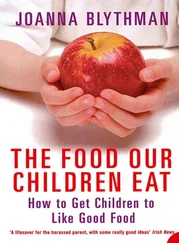Charles West - The Mother's Manual of Children's Diseases
Здесь есть возможность читать онлайн «Charles West - The Mother's Manual of Children's Diseases» — ознакомительный отрывок электронной книги совершенно бесплатно, а после прочтения отрывка купить полную версию. В некоторых случаях можно слушать аудио, скачать через торрент в формате fb2 и присутствует краткое содержание. Издательство: Иностранный паблик, Жанр: Руководства, Медицина, foreign_desc, на английском языке. Описание произведения, (предисловие) а так же отзывы посетителей доступны на портале библиотеки ЛибКат.
- Название:The Mother's Manual of Children's Diseases
- Автор:
- Издательство:Иностранный паблик
- Жанр:
- Год:неизвестен
- ISBN:нет данных
- Рейтинг книги:5 / 5. Голосов: 1
-
Избранное:Добавить в избранное
- Отзывы:
-
Ваша оценка:
- 100
- 1
- 2
- 3
- 4
- 5
The Mother's Manual of Children's Diseases: краткое содержание, описание и аннотация
Предлагаем к чтению аннотацию, описание, краткое содержание или предисловие (зависит от того, что написал сам автор книги «The Mother's Manual of Children's Diseases»). Если вы не нашли необходимую информацию о книге — напишите в комментариях, мы постараемся отыскать её.
The Mother's Manual of Children's Diseases — читать онлайн ознакомительный отрывок
Ниже представлен текст книги, разбитый по страницам. Система сохранения места последней прочитанной страницы, позволяет с удобством читать онлайн бесплатно книгу «The Mother's Manual of Children's Diseases», без необходимости каждый раз заново искать на чём Вы остановились. Поставьте закладку, и сможете в любой момент перейти на страницу, на которой закончили чтение.
Интервал:
Закладка:
When cows' milk is given, it must be borne in mind that it contains nearly twice as much curd, and about an eighth less sugar, than human milk. It is therefore necessary that it should be given in a diluted state and slightly sweetened. The dilution must vary according to the infant's age; at first the milk may be mixed with an equal quantity of water, but as the child grows older the proportion of water may be reduced to one-third. Mere dilution with water, however, leaves the proportion of curd unaltered, and it is precisely the curd which the infant is unable to digest. Instead, therefore, of diluting the milk simply with water, it is often better to add one part of whey to about two parts of milk, which, according to the child's age, may or may not be previously diluted 8 8 The directions given by the distinguished chemist, Dr. Frankland, to whom I am indebted for the suggestion, are as follows: 'One-third of a pint of new milk is allowed to stand until the cream has settled; the latter is removed, and to the blue milk thus obtained about a square inch of rennet is to be added, and the milk vessel placed in warm water.' (I may add that the artificial rennet sold by most chemists may be substituted for the other.) 'In about five minutes the rennet, which may again be repeatedly used, being removed, the whey is carefully poured off, and immediately heated to boiling to prevent its becoming sour. A further quantity of curd separates, and must be removed by straining through calico. In one quarter of a pint of this hot whey is to be dissolved three-eighths of an ounce of milk sugar, and this solution, along with the cream removed from the one-third of a pint of milk, must be added to half a pint of new milk. This will constitute the food for an infant of from five to eight months old for twelve hours; or, more correctly speaking, it will be one-half of the quantity required for twenty-four hours. It is absolutely necessary that a fresh quantity should be prepared every twelve hours; and it is scarcely necessary to add that the strictest cleanliness in all the vessels used is indispensable.'
.
Attention must be paid to the temperature of the food when given to the infant, which ought to be as nearly as possible the same as that of the mother's milk, namely from 90° to 95° Fahrenheit, and in all cases in which care is needed a thermometer should be employed in order to insure the food being given at the same temperature. Human milk is alkaline, and even if kept for a considerable time it shows little tendency to become sour. The milk of animals when in perfect health likewise presents an alkaline reaction, and that of cows when at grass forms no exception to this rule. Milk even very slightly acid is certain to disagree with an infant; it is therefore always worth while the moment that a hand-fed infant seems ailing to ascertain this point. If alkaline, the milk will deepen the blue colour of litmus paper, which is to be had of any chemist; if acid, it will discharge the colour and turn it red. It is, perhaps, as well to add that, as the oxygen in the atmosphere tends to redden litmus paper, it should not be left exposed to the air, but should always be kept in a glass-stoppered bottle.
The milk of the cow is very liable to alteration from comparatively slight causes, and particularly from changes in the animal's diet; while even in the most favourable circumstances if the animal is shut up in a city and stall-fed, all the solid constituents of its milk suffer a remarkable diminution; while the secretion further has a great tendency to become acid, or to undergo even more serious deterioration. Mere acidity of the milk can be counteracted for the moment by the addition of lime-water, or by stirring up with it a small quantity of prepared chalk, which may be allowed to subside to the bottom of the vessel; or if it should happen, though indeed that is rarely the case in these circumstances, that the child is constipated, carbonate of magnesia may be substituted for the chalk or lime-water. If these simple proceedings are not sufficient to restore the infant's health, it will be wise to seek at once for another source of milk supply, and to place the suspected milk in the hands of the medical officer of health or of the public analyst, in order that it may be submitted to a thorough chemical and microscopical examination.
The difficulty sometimes found in obtaining an unvaryingly good milk supply, as well as practical convenience in many respects, has led to the extensive employment of various forms of condensed milk. They form undoubtedly the best substitute for fresh cows' milk which we possess, and are a great boon especially to the poor in large towns where the milk supply is often scanty, not always fresh, and sometimes of bad quality. I should certainly prefer condensed milk for an infant to milk from cows living in close dirty stables, such as my experience thirty years ago made me familiar with in some parts of London.
Still all the varieties of condensed milk are far inferior in quality to good fresh milk. They contain less butter, less albumen, that is to say less of the main constituents of all animal solids and fluids, and a greater proportion of what are termed the hydro-carbonates, such for instance as sugar; or, to state the same thing differently, the elements which serve for nutrition are in smaller proportion than in fresh milk to those which minister to respiration. They are not only less nutritious, but the large quantity of sugar which they contain not infrequently disagrees with the child, and causes bowel complaint. I do not know how far the so-called unsweetened condensed milk which has of late come into the market is free from this objection; but I have always preferred the Aylesbury condensed milk, which is manufactured with sugar, to the Swiss condensed milk, into which, as I have been given to understand, honey largely enters.
How much food does an infant of a month old require? what intervals should be allowed between each time of feeding? and how should the food be given? are three questions which call for a moment's notice. The attempt has been made to determine the first point by two very distinguished French physicians, who weighed the infants before and after each time of sucking. Their observations, however, were not sufficiently numerous to be decisive, and their results were very conflicting; the one estimating the quantity at two pounds and a quarter avoirdupois, which would be equivalent to nearly a quart, the other at not quite half as much; but the observations of the latter were made on exceptionally weak and sickly infants. Infants no doubt vary, as do grown people, as to the quantity of food they require. I should estimate from my own experience and observation, apart from accurate data, a pint as the minimum needed by an infant a month old; and while Dr. Frankland's estimate of a pint and a half for an infant of five months seems to me very reasonable, I should doubt its sufficing for a child of nine months unless it were supplemented by other food.
The infant during the first month of life takes food every two hours, and even when asleep should not be allowed to pass more than three hours; and this frequent need of food continues until the age of two, sometimes even until three, months. Afterwards, and until six months old, the child does not need to be fed oftener than every three hours during the twelve waking hours, and every four hours during the sleeping time. Later on, five times in the twenty-four hours, namely thrice by day, once the last thing at night, and once again in the early morning, are best for the child's health as well as for the nurse's comfort.
How is an infant not at the breast to be fed? Certainly not with the cup or spoon; a child so fed has no choice in the matter, but must either swallow or choke, and is fed as they fatten turkeys for the market. The infant, on the other hand, sucks the bottle as it would suck its mother's breast; it rests when fatigued, it stops to play, it leaves off when it has had enough, and many a useful inference may be drawn by the observant nurse or mother who watches the infant sucking, and notices if the child sucks feebly, or leaves off panting from want of breath, or stops in the midst, and cries because its mouth is sore or its gums are tender.
Читать дальшеИнтервал:
Закладка:
Похожие книги на «The Mother's Manual of Children's Diseases»
Представляем Вашему вниманию похожие книги на «The Mother's Manual of Children's Diseases» списком для выбора. Мы отобрали схожую по названию и смыслу литературу в надежде предоставить читателям больше вариантов отыскать новые, интересные, ещё непрочитанные произведения.
Обсуждение, отзывы о книге «The Mother's Manual of Children's Diseases» и просто собственные мнения читателей. Оставьте ваши комментарии, напишите, что Вы думаете о произведении, его смысле или главных героях. Укажите что конкретно понравилось, а что нет, и почему Вы так считаете.











